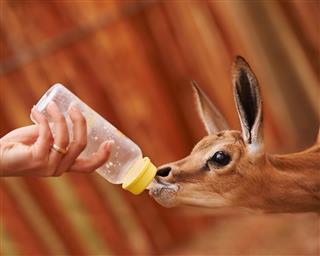
It is a preconceived notion that bacteria are always harmful to the human body. This is not true, as there exist bacteria that help in facilitating a healthy system in our bodies. This article talks about such beneficial bacteria.
Bacteria are lifeforms that are single-celled and microscopic in size, which exist in every habitat, on every surface, including the digestive tracts of humans. Usually associated with illnesses, few are aware of the fact that these tiny organisms can also be beneficial to our health.
In the beginning of the 20th century, Élie Metchnikoff, a Russian Nobel laureate known for his extensive research of the human immune system, discovered that some strains of bacteria present in our bodies were beneficial to various internal human processes. These good bacteria are called ‘probiotics’, and help the immune system combat certain diseases.
Here are some probiotics, along with their benefits and sources.
Different Types of Probiotics
Lactobacillus acidophilus
This is a type of chained cocci or rod-shaped lactic acid probiotic bacteria that can be found in the intestine, mouth and vagina of humans and animals. Most strains are able to survive in the intestine as they are resistant to bile and digestive enzymes. Different species of these bacteria are found in a variety of places, from dairy products to the human gastrointestinal tract. Lactobacillus acidophilus aids in decreasing the effect of gastrointestinal problems and vaginal yeast infection, while boosting the immune system. It is also known to relieve lactose intolerance.
Sources of Lactobacillus acidophilus include probiotic capsules, yogurt, sweet acidophilus milk, miso, and tempeh.
Bacillus subtilis
This is a rod-like microorganism that is more often found outside the human body, mainly in soil, but is equally beneficial for the human body as any other friendly bacteria. Research that suggests it is also present in the human gut is yet to be proven conclusive. The most popular use for these bacteria was carried out by the Nazi Army in 1941, when they used it to treat dysentery in various military campaigns in the North African region. Bacillus subtilis aids in fighting off diarrhea.
Sources of Bacillus subtilis include fermented soybeans, yogurt, ice cream, milk, and cheese.
Bifidobacterium animalis
This type of rod-shaped probiotic is found in the large intestine in humans, but it can be grown outside the human body too. It is actually formed by two different types of bacterial strains, Bifidobacterium lactis and Bifidobacterium animalis. It has the property of attaching itself to the walls of the intestine and thereby limiting the nutrients available to harmful bacteria. Bifidobacterium animalis aids the digestive process and helps in relieving the symptoms of irritable bowel syndrome or chronic constipation.
Sources of Bifidobacterium animalis include probiotic supplements, yogurt, ice cream, milk, and cheese.
Streptococcus thermophilus
This is a probiotic bacteria belonging to the lactic acid category that is grouped in chains and resembles a chain of beads. One of its main properties is that it thrives in warm temperatures and has the ability to withstand temperatures up to 212 degrees Fahrenheit. Hence, it survives even after milk is heated. Streptococcus thermophilus is known to boost the immune system and facilitates the maintenance of a healthy colon.
Sources of Streptococcus thermophilus include Mozzarella cheese, yogurt, and milk.
Lactobacillus reuteri
This is a naturally occurring probiotic lactic acid bacteria that is a permanent resident in the guts of humans, though it is not found in every individual. Unlike some of the other bacteria that exist in the human system for a particular period of time, Lactobacillus reuteri does not leave the system. It is also found in human breast milk. Lactobacillus reuteri helps in boosting the immune system, and also has anti-gas properties.
Sources of Lactobacillus reuteri include capsules, yogurt, breast milk, and cheese.
In addition to these, there are lots of other varieties that are beneficial as well, to humans as well as the environment.
Some of the well-known bacteria known to be beneficial include Staphylococcus epidermidis, Viridans streptococcus, Bacillus coagulans, Lactobacillus kimchii, Escherichia coli, Lactococcus lactis, Enterococcus faecium, and Bifidobacterium bifidum.
Uses of Beneficial Bacteria in the Environment
Rhizobium
Combines nitrogen with oxygen to produce ammonia, which is essential in the process of photosynthesis.
Methanotroph
Uses copper from the environment to metabolize methane, a dangerous greenhouse gas released from various industrial processes and decomposition of waste.
Streptomycetes
Decomposes dead plants and animals by breaking them down to basic elements, which are then consumed by new plants as nutrients, facilitating the continuity of the cycle of converting dead matter into new forms of life.
Alcanivorax
Feeds on petroleum, hence aids in cleaning up spaces which have been affected by incidents of petroleum spilling, though the process is slow and does not clear up the whole area.
Apart from these benefits, probiotic bacteria also help gut microflora grow back after a case of infection. Normally, doctors recommend a dose of probiotics after a course of antibiotics, as antibiotics, along with killing the bacteria associated with infection, also kill some of the good or beneficial bacteria in the gut. Probiotic bacteria also help in cases of colitis, lowering blood pressure, lowering cholesterol, and even in improving the absorption of minerals in the body. It has also been claimed that good bacteria help people who are suffering from allergies.
Mother nature has created a means of ensuring that we remain protected from deleterious conditions. And as we have seen, one such creation is probiotics, or the friendly bacteria.





